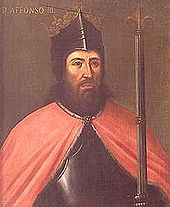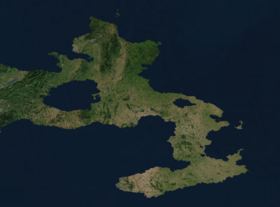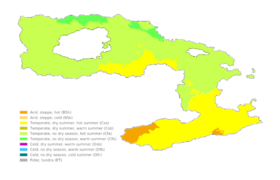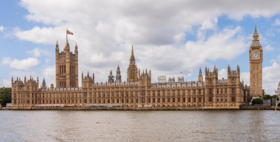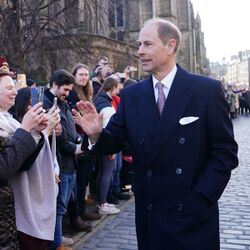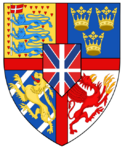Angland
This article is about the metropolitan Angland. For the sovereign state, see Anglish Realm.
| Motto: | |
| Anthem: "I Vow to Thee, My Country!" Royal anthem: God save our Queen. | |
 Map of Angland within Parthenia. | |
| Capital and largest city | Retoria |
| Official languages | Anglish (De-Facto) Vetullian (De-Facto) |
| Recognized languages | |
| Ethnic groups |
|
| Religion |
|
| Demonym(s) | Anglican/Anglish |
| Government | Unitary parliamentary constitutional monarchy |
• Monarch | Richard V |
| Leonard Chapman (acting) | |
| Legislature | Parliament of Angland |
| Establishment | |
| 12th July 1112 | |
• Establishment of the Battanian Empire | 1 March 1579 |
| 28 November 1989 | |
| Area | |
• Total | 1,043,435.71 km2 (402,872.78 sq mi) |
| Population | |
• Estimate | 49,884,032 |
• Density | 117/km2 (303.0/sq mi) |
| GDP (PPP) | 2020 estimate |
• Total | $3.752 trillion |
• Per capita | $55,301 |
| GDP (nominal) | 2020 estimate |
• Total | $3.376 trillion |
• Per capita | $49,761 |
| Currency | Anglish Shilling |
| Driving side | right |
| Calling code | +079 |
| Internet TLD | .an |
The Great Kingdom of Angland (pronounced [ˈæŋɡə͡llənd], listen) otherwise simply referred to as Angland or Anglica, is an Anglican constituent country in eastern Parthenia. It acts as the most politically central and consituent state of the Anglish Realm, a constitutionally unitary state. Metropolitan Angland is one of the nations that take up the Battanian Peninsula, lying south of Charmelcia and east of Brynmor and Vermand. It's borders are defined by the River Serrano to the west and the historic border with Charmelcia.
Metropolitan Angland has a total area of 1,043,435.71 km^2, making it the largest nation in south-eastern Parthenia with an estimated 2020 population of 49,884,032. The population is mostly urbanised however spread out with a population density of 47.80/km2 (18.4/sq mil). Angland is a unitary parliamentary constitutional monarchy divided into counties that operates under the D'Hondt method. The capital city of Angland is Retoria which has a city population of around 9,840,394, making it the second largest city in Parthenia.
The area now known as Angland has been inhabited by modern humans since at least the Upper Paleolithic period, however takes it's name from the Remillian conquest around 30,000 years later, when Emperor Tiber named the peninsula "Angligaullica". Remillian conquest brought Latinization to the population. The fall of the Remillian Empire ensured the migration of the Anglo-Herulians who established early Anglican culture. Following unification under Stephen the Great, Anglica had significant cultural, political and legal impact on the wider world. Brief Islamic occupation of the Cornkien Peninsula occurred in 1112, which was eventually taken down by the Christian Anglican Conquest in 1244. Under the Orange kings (1149-1399), Anglish language and law developed and formed the basis for common law and legal systems for around the world. The downfall of the house began as they were bogged down in the Endless War with Vermand during the 1328. This left Angland beset with social, political and economic problems.
At the turn of the 15th century, the influential House of Vieri managed to take control of the Anglican throne under Henry IV. The widespread Battanian Empire was formed in 1579 when Robert III signed the Treaty of Unity. The empire was a contributing factor to the spread of Anglish ideals and systems across Elezia. However following a declining economic situation, the House of Vieri was removed from the throne in 1695 at the end of the Anglish Civil War, where they were replaced by the House of Graff that lasted until 1732. Parliament was officially established in 1741, replacing the Small Council, and overtaking the monarch as leading power in the country. Angland held an important global role during the 19th and early 20th centuries, being the heart of the Industrial Revolution under William I as well as being a core Liberal Alliance power during the First World War. Following the war was an inter-war period of growth and repair for Angland as it saw a surprising period of reform under Prime-Minister Neville Matthews (often considered the greatest leader in Anglish history). In 1931, 31 years on from the first war, the outbreak of the Second World War saw Angland siding with the Entente. In 1934, after 3 years of fighting, Angland saw fighting on the border with Vermand as it was occupied by the Eisen Rijk. After another victory, Angland did not directly participate in the Third World War and instead acted as a supporter of the United Federation of Triania and the United Nations. Following the huge Third World War, Angland joined the UN and the UNSC in order to guarentee a war of that scale would never occur again.
Angland is considered a great power in modern day, with one of the largest economies in all of Parthenia. Angland maintains a secure welfare state and universal healthcare, as well as one of the world's best education systems in part due to it's prestigious university system. Angland became an industrialised exporter of large amounts of agricultural produce in the second half of the 19th century, Angland introduced social and labour-market reforms in the early 20th century which lead to the formation of the basis for the present welfare state model and advanced mixed economy. Angland is considered a developed country, ranking highly in the HDI and a high standard of living. Angland is one of five permanent members of the UNSC and a member of the UN, PEU, Parthenian Community, X and the Anglophone Community.
Etymology

"Anglica" derrives from the ancient Remillian term for the peninsula, "Angligaullica" or "Anglogallia". This is known as a letter addressed back to Emperor Tiber from Remillian General Octamius states:
"magna paeninsula victa est et prospectus noster dilatatus est, Anglogallia nostra est".-General Octamius
"the great peninsula has been conquered and our horizons expanded, peninsula is ours".
The word "Angli" is of unkown origin. Due to the general Latinization of the general population the name began to become used widely and was eventually coined by early Remillian philosopher Astridius as "Angliaca". After the collapse of the Remillian Empire and subsequent fall of the Angligaullica the peninsula was left with a power vacuum. Eventually this was filled by Stephen the Great who took a united throne and upon his coronation stated:
"I take control of a united Anglica, land of the Anglicans!".
History
Prehistory
Angland was the first nation in Parthenia to be settled by humans during the Great Hominid Migration from Atusia and the east. Despite this, humans are thought to have kept travelling instead of stopping in Angland for any long periods, with little evidence of settlement dating back to before 40,000 years ago. By the end of the region's prehistoric period the peninsula was inhabited by a culture which eventually evolved into Celts, comprising Celtic Anglica and Celtic Charmelcia.
Remillian Empire and early kingdoms
The Remillian conquest of the peninsula began in 49 AD, and began a ruling of Angland that lasted for over three centuries. During this time many grand Remillian structures where built all over the peninsula, notably in places such as Baths and Retoria which still have notable Remillian influence into modern day. Despite this, upon the collapse of the Remillian Empire in 301 CE the Battanian Peninsula was invaded by Germanic Anglo-Herulians as well as Kellins from the Lokournan peninsula to the north of Angland. Despite this, due to the technological advantages of the Anglo-Herulian people the Kellins were reduced to Cornkien, where they eventually became the Cornkien ethnic group, as well as to Charmelcia where they became a minority group to the celts in the region. A majority of the land settled by the Anglo-Herulians became the later Kingdom of Angland. Following this, the Gaelic speaking Celts united with the Picts to form the earliest Kingdom of Charmelcia in the 8th century.
Antiquity

In 1089, Angland invaded neighbouring Vermand and won a great victory in the land, establishing a monarchy in the region that came to be Brynmor, known as Brya'mordaleat. This region became an early vassal state for Angland, located within former Vermandois lands and in a region split ethnically between Anglish speakers and Vermandois. After conquering Vermand for the first time, they shared feudalism with the state as well as with Charmelcia. Subsequent medieval kings made attempts to annex Vermand and Charmelcia, only being successful with the latter.
The House of Westemere, refers to the noble family, traditionally founded by Cedric, that originated from and ruled Westemere in Southern Angland from the early 6th century, and whose members were kings of Westemere and then kings of Angland after Stephen the Great’s ascension to the throne in 1052. It lasted until the House of Orange came to power in 1154. The house emerged from the union between Cedric, first ruler of Westemere and Cunegundis of Baths, a local noblewoman, and became dominant in southern Angland after the accession of King Egbert in 802. The disastrous reign of Ælfred the Unready almost ended in Deslerian conquest in 1014. Ælfred and his son Edmund managed to resist the Wittekings in 1016, ruling until 1042. The House of Westemere then managed to unify the seven Anglican kingdoms under Edmund's son Stephen the Great. All kings of Angland since Henry II have been descended from the House of Westemere through Henry I's wife Maude of Charmelcia, who was a great-granddaughter of Stephen. Stephen the Great and his heirs down through 1135 were members of this dynasty. After that it was disputed between Stephen’s grandchildren, Maude, whose husband Joffrey was the founder of the House of Orange, and Stephen of the House of Bray, until 1154.
Age of Orange
The House of Orange was a royal house which originated from Eisen. The family held the Anglish throne from 1154 (with the accession of Henry II at the end of the Anarchy) to 1399, when Richard II died without issue. Under the Oranges, Angland was transformed. The Orange kings were often forced to negotiate compromises such as the Great Charter, which had served to constrain their royal power in return for financial and military support. The king was no longer considered an absolute monarch in the nation—holding the prerogatives of judgement, feudal tribute, and warfare—but now also had defined duties to the kingdom, underpinned by a sophisticated justice system. A distinct national identity was shaped by their conflict with the Vermandois, Charmelcs, Brynmorians and Ogygians, as well as by the establishment of the Anglish language as the primary language. In the 14th century, the Oranges were bogged down in the Endless War and beset with social, political and economic problems. Popular revolts were common-place, triggered by the denial of numerous freedoms. Anglish nobles raised private armies, engaged in private feuds and openly defied Richard III. The rivalry between the House of Orange and the influential Vetulian House of Vieri brought about the First Civil Wars, a decades-long fight for the Anglish succession, culminating in the Battle of Hinckley in 1399, when the reign of the Oranges and the Anglish Middle Ages both met their end with the death of King Richard III. Henry IV of legitimised Vieri descent became king of Angland; five months later, he married Elizabeth of Orange, thus giving rise to the Anglish Vieri dynasty. The Vieris worked to centralise Anglish royal power, which allowed them to avoid some of the problems that had plagued the last Orange rulers. The resulting stability allowed for the Anglish Rebirth and the advent of early modern Angland.
Vieri Monarchy

Angland soon after, due to it's involvement with Vermand and monarchic links to the crown, assisted with the Vermandois-Eisen War which they were victorious. Due to the rulership of King Louis II (A leader of heavy Vetullian descent) a period of religious instability began during the 1500s resulting from the introduction of Protestant state churches in the country. For a period the vassal state of Brynmor was encorparated fully into the Kingdom of Angland as well as the previously independent region of Cornkien.
In 1579, under Robert III, the Battanian was established at the Treaty of Unity. Angland had already been at the forefront of Parthenian foreign colonisation, notably in northern Muanbia and southern Atusia which had been set up in the decades prior.
In 1601, Angland's most influential monarch began his reign, Arthur I. A member of the influential House of Vieri, Arthur had claim to a majority of Eastern Parthenia by 1620 through family inheritance. This means that Arthur was in control of not only a majority of Eastern Parthenia but also large parts of the eastern hemisphere with colonies expanding in Atusia and Muanbia.
In the mid-17th century Angland had a piracy crisis, with Anglish sailors being involved in acts of piracy all across the southern coast of Parthenia and across the Aurean Sea. Piracy was fought against by the first Anglish Queen, Anastasia I, who notably displayed the corpses of capture pirates along the River Avonia in the capital, Retoria. In the year 1673 the Vieri Parthenian territories collapsed following the War of the Poppies. Despite this collapse, the Angles came out of the War of the Poppies in a much stronger position than their Parthenian neighbours with the economy still thriving and a powerful military under the respected King Robert IV.
Anglish Civil War
In 1690 Robert passed away and the throne went to his eldest son, Eric, first of his name, who became known as Eric the Harsh due to his strange sense of brutality and influence. He caused uprising within the capital Retoria and was poisoned at his own wedding aged only 17. This lead to his younger brother Tommen taking the throne, aged only 12. Due to his young age a majority of Angland was ruled by a council, notably including grandfather Frederick Ecclestark and Amalric Melisande who was the first foreign advisor in Angland being from Yerezh. Many in the nation were unhappy with the rulership of the young king, seeing him as a weak leader. This lead to the uprising in the north, with Lord Robert Graff being proclaimed as the king in the north, with independence being stated by the northern states. This lead to the beginning of the Anglish Civil War as the north went to war with the south to proclaim their independence and place House Graff onto the throne. After a war that lasted only 2 years, Retoria was sacked by northern forces and House Graff took power over the Anglish throne.
Despite most being happy with House Graff's ascension to the throne in Angland, other powers in Parthenia were less attracted to the prospect of a family of Charmelcan descent ruling the peninsula. Despite this, Robert Graff made sure that relations between Angland and the pope remained strong, protecting them from Vetullian invasion. Despite this, the House of Graff lasted only two monarchs, as Edward III died without issue.
The Sun Never Sets
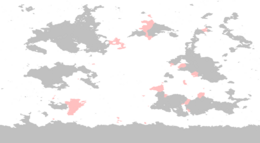

Following the death of Edward III, the Anglish throne was inherited by the noble House of Bientot who had claims over Sainta Malo, Vermand. The first Bientot monarch was James IV, who was coronated on the 16th July 1732. Under the Bientot kings the already large Battanian Empire only continued it's expansion, holding new territories in Triania and Muanbia. The empire began to grow so vastly and largely that it became the first ever to be described as a hyperpower while under William I.
The Industrial Revolution started in Angland with an initial concentration on the textile industry, followed by other heavy industries such as shipbuilding, coal mining and steelmaking. Anglican merchants, shippers and bankers developed overwhelming advantage over those of other nations allowing Angland to dominate international trade in the 19th century. During the Willard Era many of the northern cities became hotspots for heavy industrialisation, notably the city of Westhampton in the midlands.
In 1851, the Battanian Empire owned territory in every continent on Erth, with the establishment of the Buri Island Protectorate in Tarandra. It was also in 1853 when the Battanian Empire took control of Barbodia, making the Battanian Empire the largest empire in history by total area, with Angland having a huge deal of influence over global politics.
World War One and Post-War
World War Two
Post-World War Three and Modern Conflict
Contemporary Angland
Geography
Location and Borders
The vast majority of Angland's territory and population is situated in Eastern Parthenia and is called Metropolitan Angland, to distinguish it from the country's various overseas polities as part of the Anglish Realm. It is bordered by the Slethari Sea in the north, the Charmelcan Channel in the northeast, the Merillian Ocean in the east and the Aurean Sea in the south. It's land borders consist of Charmelcia to the north and Vermand to the west. Both of Anglands land borders are defined by natural boundaries and geographic features. Metropolitan Angland also includes various small coastal islands, notably with the Strait Islands off the east coast. Due to warm currents from the Merillian, Angland lies within the northern temperate zone. All of metropolitan Angland is located within the -1 timezone on the UN Timezone Map. Angland has several overseas territories, members of the Anglish Realm. They are as follows:
- Crown Dependencies:
- Barbodia, an island off the coast of Muanbia; home to a population of 420,484
- South Bagel Islands, a colonial holding close to Triania Minor.
- Research Holdings:
- Torporea Anglish Holding, the research stations of Angland on Torporea.
- Tamsnia, a small island around 18 miles north of Torporea.
Metripolitan Angland has a total land area of 1,043,435.71 km2 making it one of the largest in Parthenia. Angland possesses a wide variety of landscapes, from temperate plains in the north and west to aird plateaus of Cornkien in the southeast, the Central Plains in the north-central and Great Lake in the west midlands. The highest point in Angland is Point Edwards, near the border with Vermand (429m).
Gardens at the Ledecester Castle.
The Forest of Oak, one of a few temperate rainforests in Parthenia.
Climate
The climate of Angland is mostly temperate, with seasonal variation. Temperatures across the country stay between around -5*C to 40*C and there is a moderate level of rainfall per year. In metripolitan Angland the prevailing winds are westerly due to it's position in the northern hemisphere, owing to the temperate climate. Angland has four seasons in it's year (spring,summer,autumn and winter). The highest ever recorded temperature in Angland was on July 19th 2022 in Burnham, Cornkien at around 49.6*C and the lowest was recorded in Newfort on November 31st 1978 at -29*C.
Biodiversity
The fauna of Angland is similar to that of other areas on the Battanian Peninsula with a wide range of vertebrate and invertebrate life in a diverse range of habitats.
Politics
The government of Angland is a Unitary Parliamentary Constitutional Monarchy in which the monarch is head of state and appoints the Head of Government. The monarch officially retains executive power and presides over the Council of State (privy council). However, in practise the duties of the monarch are mostly ceremonial and representative, notably the formal appointment and dismissal of new Prime-Ministers and government members. The monarch is not answerable for his/her actions and their person is sacrosanct. Hereditary monarch Richard V who has been head of state since 18 April 1987.
Government
Politics in Angland operate under a framework laid out in the Constitution of Angland. The Parliament of Angland is unicameral and often referred to as "Parlamento". It is the legislature of the Anglish Realm passing acts that apply in Angland, Barbodia and the South Bagel Islands. Parliament is also responsible for adopting Angland's state budgets, approving the state's accounts, taking part in international co-operation and apointing and exercising control of the government. Bills may be initiated by the government or by members of Parliament.
Administrative Divisions
Angland with a total land area of 1,043,435.71 km2 (402,872.78 sq mi) is divided up into administative divisions, known as regions. These regions are further divided into subregions known as counties which govern on a local level. The region of Cornkien has a higher level of autonomy than the other regions, as Angland's only autonomous district. This is due to the cultural divide of the Cornkien people. For statistical use, Angland is divided into provinces which are not administrative divisions and have no place in political elections but are used often for statistics.
The region system was introduced on the 5th May 1991, replacing the previous county system. Counties still exist as smaller divisions within the major regions, with ranging populations but all above 20,000.
Territorial Disputes
Military and Intelligence
United Nations
Economy
Military Spending
Exports
Tourism
Demographics
Ethnic Groups
Urbanisation
Largest cities or towns in Angland
National Census 2020 | |||||||||
|---|---|---|---|---|---|---|---|---|---|
| Rank | Region | Pop. | Rank | Region | Pop. | ||||
 Retoria  Cester |
1 | Retoria | Greater Retoria | 9,840,394 | 11 | Barnley | Barnley (County) | 479,495 |  Saint Sebastian  Westhampton |
| 2 | Cester | Cestershire | 2,919,600 | 12 | Hartlea | Thorpeshire | 338,693 | ||
| 3 | Saint Sebastian | South Shieldshire | 1,640,000 | 13 | Presdon | Baths (County) | 233,495 | ||
| 4 | Westhampton | Leamingshire | 1,079,000 | 14 | Les Laurens | Barcombe-On-Sea | 199,384 | ||
| 5 | Newfort | Newfort (County) | 893,495 | 15 | Sixton | Sixton-On-Sea | 170,495 | ||
| 6 | Canterford | Windsorshire | 733,000 | 16 | Norcaster | Snottinghamshire | 140,895 | ||
| 7 | Moorchester | Yarlford | 703,394 | 17 | Easthampton | Sterry | 118,503 | ||
| 8 | Keverne | Cornkien | 655,492 | 18 | Windemere | Carvershire | 80,586 | ||
| 9 | Dunholm | North Tidings | 589,000 | 19 | Warwickton | Leamingshire | 49,394 | ||
| 10 | Baths | Baths (County) | 540,000 | 20 | Dunhurst | Nefort | 41,129 | ||
Population
With over 49 million inhabitants, Angland is the most populous constituent of the Anglish Realm by a large degree as well as the largest by just over a million on the Battanian Peninsula. Angland taken as a unit and put against the other wrld nations would make it the 44th most populous nation.
The native people of Angland are Anglican. Evidence suggests that around 60-70% of Anglicans descend from prehistoric ancestors from the Edetanian Sea area, a 5-10% contribution from Anglo-Herulians from Deseleria as well as significant Witteking heritage. Other historians place modern Anglican descendents being from Latin Vetullia. Major cultural groups that have influenced Anglican culture include the Anglo-Herulians, Remillians, Wittekings, Livani, Vetullians, Brynmorians and Eisen cultures. Huge Anglish diaspora exists across the globe, notably in the United Federation and the Anglish Realm. Since the 1700s Anglicans have often migrated to Vetullia.
During the time of the Orange kings, the Great Charter reported a population of 3 million across the occupied peninsula. About 8% of the population of the time lived in urban areas. By 1804 the population was 9.1 million and by 1904 the population was 29.4 million. Over time it has also recieved a large amount of economic migrants, mainly in due to the economic importance of Retoria and North-Central Angland. There has also been significant Vetullian migration, with Vetullian being the second official language of Angland as an estimated 43% of the population can speak the language. The total population of ethnically Parthenian residents is 78.7%, with groups including Vetullians and Vermandois making up a majority.
Large non-Parthenian groups still exist in Angland, notably Islamic groups since the occupation of Cornkien in the 12th century. Notable Islamic communities exist in Westhampton, Moorchester and Keverne. The result of the Battanian Empire, notable Atusian and Muanbian ethnicities reside in Angland. 4% of Angland's population is made up of Kuthrans from South Atusia. About 0.4% are Zyanggong. 3.4% of the population are black, particularly originating from Triania Minor and Muanbia. Debate over immigration remains prominent in the country.
Angland contains two indigenous recognised national minorities, the Cornkien people and the Robergiais people. Both of these groups are descendents of people groups from Bro Wered, speaking Werredic languages, and both are recognised by the government under the 1974 Indigenous Protection Articles. The Cornkien people are native to the Cornkien peninsula in southern Angland, an autonomous community that has been at debate for independence for over a century. The Robergiais people are a smaller group native to the Strait Islands.
Culture
Religion

Remillian Catholicism, which has had a long history in Angland, remains the dominant religion. Although it has no official status by law, in all public schools in Angland students have to choose either a religion or ethics class. Catholicism is the religion most commonly taught however the teaching of Judaism, Buddhism and Islam is also required. According to a 2020 study by the Anglish Centre for Sociological Research, about
74.3% of Anglicans self-identify as Catholics, 1.5% other christian faiths, 4.4% Islam and about 19.1% identify with no religion. Despite this, the majority of Anglicans do not attend regular religious services. A study from 2009 showed that out of those who identified as Catholic, 62% hardly ever or never go to church, 16% go to church some times a year, 7% some time per month and 13% every Sunday or multiple times per week. Some studies imply that this number is even lower by 2023.
The Anglish constitution enshrines secularism in governance, as well as freedom of religion or belief for all, saying that no religion should have a "state character," while allowing for the state to "cooperate" with religious groups.
Historically Anglish monarchs have had close relations with the church, notably with the Remillian Catholic church and Cittasanta. There has been two Anglish popes; John II and Nicolas I. Historic Anglish mysticism was an important historic resource against Protestantism with figures such as Joanna of Windemere, a reformist nun who was important in preventing a protestant reformation.
Cuisine
Anglican cuisine consists of a large variety of broadly Aurean foods, similar to that of other southern Parthenian countries, that come as a result due to it's diverse climate and geography. It is heavily influenced by both seafood from the waters surrounding the peninsula as well as an extensive history with cultural influences which lead to Anglican cuisine being unique amongst Parthenians. Anglican cuisine is often divided into three divisions:
- Angli-Aurean Cuisine: Centralised around the mid-south of Angland, in coastal regions from Baths down to Cornkien - heavy use of seafoods, such as fried fish, rice-based dishes such as paella, as well as several cold soups.
- North-Central Cuisine: Counties such as Newfort, Ledecestershire and Keelshire use a lot more agricultural produce, with staples of north-central cuisine including lamb, wheat and beef. Due to traditionally working-class populations, these regions produce wholesome nutrient food such as Keelish pasties which reflect the history of the people in the region. As well as this, they are producers of the majority of the nation's cheeses.
- Merillian Cuisine: The eastern regions of Angland, with counties including South and North Shieldshire, the Strait Islands and Garveyshire. The cuisine consists of a mix of vegetable and fish-based stews such as caldo galego. Salted hams such as prosciutto are also notable to this region.
Anglican wines have been recognised and enjoyed by Parthenians since the times of the Remillian Empire. In the present day, Angland is reknowned for it's fine wine scene and is considered by wine lovers to be a staple of the wine world, winning numerous international prizes. The most famous Anglican wine is Cornkien Wine, which is internationally recognised and exported.
Sport
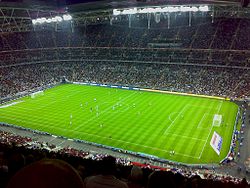
Angland has a hugely historic sporting presence, with heritage in most major sports and global success in most as well as helping codify many sports that are now played around the world. Sports originating in Angland include Association Football, cricket, rugby and Robergi Football. It has also assisted in the creation of golf and sports racing.
Out of all these sports, football is by far the most popular in the nation. The Angland National Football Team, whose home is Highfield Road, has participated in every world cup since 1950 and won the competition three times. Referred to as "The home of football" by FIFA, Angland has been the host of the 1958,1982 and 2002 FOIF World Cups. Over time, Angland has produced some of the most talented footballers the sport has seen, examples including Jessie Palmer (all-time leading goalscorer), Lincoln Bright, Cameron Phelps and current captain Keaton Vazquez.
The highest level of domestic leagues in Angland is the first division, which is often regarded to be one of the strongest leagues domestically in the wrld. The AFA is the oldest governing body in the sport. Angland is recognised as the birthplace of club football, with Newfort United being formed in 1865 being the oldest club in the world. The country has two domestic trophies, the Supercup and the AFA Cup, with the latter being held in higher prestige.
As is the case throughout eastern Parthenia, football in Angland is notable for the rivalries between clubs and the passion of the supporters, which includes a tradition of football chants. The most successful Anglish football team in the Parthenian cup tournaments is Cester F.C. who have won the competition on six occasions. Other Anglish success has come from East Retoria F.C., winning the competition on 3 occasions; Snottingham Forest F.C. and Westhampton United on 2 occasions, Newfort United have only won the trophy once.
Anglishman Herbet Hemmingway was an integral part of formulising the modern structure of the.
Cricket is generally thought to have been developed in the early medieval period among the farming and metalworking communities of Leamingshire. The Angland cricket team is a composite Angland and Brynmor, team. One of the game's top rivalries is The Rivals series between Angland and the United Federation, contested since 1882. The climax of the 2005 Rivals was viewed by 7.4 million as it was available on terrestrial television. Angland has hosted five Cricket World Cups (1975, 1979, 1983, 1999 and 2019), winning the 1999 edition in a final regarded as one of the greatest one day internationals ever played.
In basketball Angland has had a string of successful players, notably players such as Lewis Austin and Jackson Williams. Angland has competed at the top level internationally, even winning the 2002 BN World Cup final against the United Federation. The home league of Angland, the ANBA, is one of the top 10 basketball leagues in the world and often compete in international competitions, with Retoria Raiders winning the nation's only international trophy in 1988.
Architecture
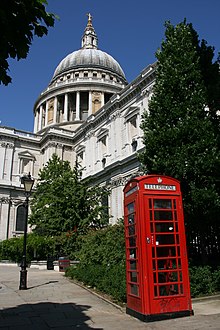
Angland is home to numerous examples of paleolithic standing stones which were erected during the prehistoric period, famous examples including the Bodmin Monument, the Hiberno Monolith and the Circle of Stones.

The various and diverse architectural styles reflect the cultural history of the country. Arches and domes are notable parts of the Renaissance architecture that exists as the prominent architectural style throughout Angland. The renaissance architectural style came from Vetullia, as the cultural influence through House Vieri lead to a reform in Anglican architecture. Pre-renaissance styles in Anglica include pre-Remillian, which saw the building of basilicas, baths, amphitheaters, triumphal arches, villas, Remillian temples, Remillian roads, Remillian forts, stockades and aqueducts. After this, Anglo-Herulian architecture became prominent, however in present day it can mostly be found in the north. Castles became popular during the Stephennic Era, mainly being built along the border with Vermand in order to keep Angland protected from land invasion. Famous castles include Ledecester Castle, Belfast Tower, Keels Castle and Aber Castle.
Through the Era of Orange, Angland saw Anglican Gothic Architecture flourish. This was most notable in many medieval cathedrals including Canterford Cathedral, Norcaster Minster and Cester Cathedral. Expanding on the Vermandois base present, this time period also saw the development of palaces, country houses, universities, great houses and castles. Medieval architecture varies depending on the part of the country, with Middle-Angland and northern Angland experiencing the Samuesque style and the south seeing more Vetullian-inspired Boroque architecture. In the aftermath of the Parthenian renaissance, a form of architecture echoing classical antiquity with a mixture of Christian style began and the Anglic-Baroque style became widespread.
The next architectural style to become widespread across the country is Robertian architecture which brought a more refined style and was introduced by famous architect Spencer Evatt. It evoked a simple palladic form. With the later emergence of romanticism during the Willard period, an era of gothic revival was born. The Industrial Revolution that occurred at the same time paved the way for unique buildings such as the Emerald Palace. In modern times many forms of modernist however a loud community of traditionalists exist in influential places.
Symbols
The St John's Cross has been the national symbol of Angland since the 14th century. Originally the flag was used by the Order of Saint John during the Crusades to Tarshiha in the late 11th century. It became a symbol of Angland in 1306 when the Anglish monarch wanted to pay tribute to Almaric II of Tarshiha and from 1306 onwards so that Anglish ships could fly the flag as a means of protection when entering the Aurean Sea. It became associated with Saint John, along with countries and cities, which claimed him as their patron saint and used his cross as a banner. Following the Treaty of the Union, St John's Cross was combined with the Cornkien Cross to create the Unionic Banner, the current flag of Angland.
The national colours of Angland are considered to be red and white. Blue and forest green are also colours historically associated with the Battanian Empire.
Various patriotic songs exist for Angland however it has two official anthems. The first - the official national anthem of metripolitan Angland - I Vow to Thee, My Country, which originated as a marching song during the first World War and was adapted by Cecil Spring in 1919. The second is the anthem of the Anglish Realm and Commonwealth - Rule Anglia!, which originated as the anthem of the navy during the height of the Battanian Empire.
Mother Anglia, a young woman often dressed in a red and blue gown, is the national personification of Angland. Mother Anglia is also often given the name Sophia Anglia , likely after the legendary Queen Sophia of Angland. Saint John, the patron saint of Angland, also is often used as the national personification of Angland.
Angland has two official national animals. The golden eagle has represented the pride and bravery of the Anglican people for centuries, likely beginnning when Robert IV had one kept at Belfast Tower, and the eagle still represents the country in personifications and in symbolism to the present day. Angland also has a fantasy national animal, the legendary rooster of Barcelos which was brought back to Angland from Leciria by Arthur I in 1631 and since has been seen as a symbol of good luck for the people.
Unioic Banner, the national flag of Angland and Cornkien
St John's Cross, the national flag of Angland
The coat of arms of Angland
A clove pink, the national flower of Angland
A weeping willow, the national tree of Angland
A golden eagle, one of the national animals of Angland
A depiction of the rooster of Barcelos, one of the national animals of Angland
Arts
Angland has had many notable and well known painters. This began in the middle ages, with Theodore Ball and Frederick Gaunt who were leading Anglican pioneers on the scene. From 1593 (the birth of famous painter Leandro De Gregorio) to 1701 was an artistic period named the "Romantic Era" where Anglican art and architecture flourished under Vieri romantic Vetullian influence. In this time, Angland was flourishing and painters prospered in an artistic movement that lasted over 100 years. Notable artists from this period include Montemuro (Artist behind many royal portraits during the 17th century), Jan Adams, Stefan Florentina and famously Leandro De Gregorio. Later Anglican artists of the 19th and 20th century include Ayden Stone and Walter Wilkinson. Famous pieces include "Dinner by the Sea" and "Portrait of the Pearl Earring"
Music
References




